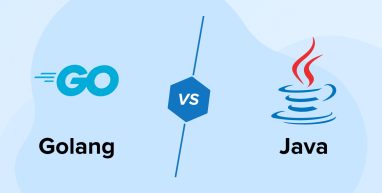
Golang vs Java is another rivalry between traditional and modern technologies in the software development industry. Java is a popular programming language that has been around for generations. Because of its longevity, Java development services have matured to address varying requirements.
Meanwhile, Golang is a modern language equipped with all the latest features and updates. It enables you to build fast and high-performing applications. Ultimately, both languages are competing to be recognized as the best backend programming language.
In this blog, you will get a complete overview of both technologies and a detailed comparison between them to help you pick a suitable option for your project.
1. What is Golang?

Golang is a programming language created and launched by Google computer scientists Ken Thompson, Robert Griesemer, and Rob Pike in 2009. Learning and using this programming language is easy. Golang (also known as Go) is compiled and open-source.
Popular for its scalability and simplicity, Golang comes with static typing features that enable you to quickly write, test, and maintain lightweight codes. Golang features like fast compile time, native binaries, garbage collection, and concurrency are a few reasons why software developers prefer to use it.
Reviewing and debugging the code becomes quick and easy as Go facilitates in-built testing and benchmarking capabilities. Golang includes all dependencies in a single binary file to simplify the deployment process. It helps you develop large-scale apps effortlessly.
1.1 Features of Golang
Some essential features of Golang include:
- Statically Typed and Readable Codes: Being a statically typed programming language, the syntax in Golang is simpler. Developers can leverage it to write clean and secure code. Maintaining and making modifications becomes easier. Even beginners can read and understand the Golang code.
- Multiple Tool Set: Golang offers a large array of tools that you can download from Go’s GitHub Repository. It consists of a variety of code editors, plugins, and IDEs that can help you create and update Golang apps.
- Concurrency Support: Goroutines from Go support concurrency by being multiplexed onto OS threads, making them lighter. It allows you to scale your application using fewer OS threads. Goroutines send or receive data using channels, enabling different Goroutines to communicate efficiently. This makes scaling and maintaining large apps easier using Go.
- Massive Data Processing: Golang can easily process large chunks of data because of its high computation speed. While it requires support from database technology, it remains a reliable solution.
- Garbage Collection: The garbage collectors in the Go automatically free the memory storage when it no longer needs the information stored in it. Because the process isn’t manual, there are no chances of errors or memory leaks. This helps boost the efficiency of the Golang application.
1.2 Advantages of Golang
A few reasons why you should use Golang for your next project are as mentioned below:
- Golang is Fast: Being a compiled programming language, Golang automatically translates your written code into a format that is readable to a processor. This speeds up the processes and ensures that Golang services are available and reliable.
- Easy Learning Curve: Golang has a little different syntax from Java or C, but it follows the same procedural approach. So, if you are familiar with Java or C programming languages, you can easily get started with Go. Even a beginner can quickly familiarize themselves with Golang and build an application in a few hours.
- Golang is Well-Scaled: Concurrency is the primary reason many developers choose Golang. Goroutines are lightweight, unlike threads in Java. You can run thousands of Goroutines on your system without risking a crash.
- Comprehensive Programming Tools: Although Golang is a relatively young language, it offers a broad range of tools for developers. For programming, it supports various popular IDEs like Visual Studio Code and more. Moreover, you can download various plugins and code editors from its GitHub repository.
- Growing Pool of Talent: Golang is one of the most in-demand programming languages around the world. It is growing both as a development technology and a community. Given the usefulness of Golang for businesses, it is likely that you will need a full-time Golang developer for your projects shortly.
- Golang is Ideal for Many Diverse Scenarios: Golang is a multi-purpose language. So if your projects involve multiple aspects, such as web development, streaming, cloud computing, and data science, then Go is an ideal choice.
- Well-Documented with an Active Community: For Golang development, you can find good documentation on the official Golang website. Moreover, there is an active community that supports Golang. So, if you encounter any issues, they could help.
1.3 Disadvantages of Golang
Go is relatively a new programming language. So you might face a few problems while using it. Some of them are:
- Time-Consuming: Golang developers have to spend more time writing code to create a function that can provide results similar to those in other languages. This becomes a serious issue when developers are working on tight deadlines.
- It’s A Young Language: Although it has been more than a decade since its initial launch, Golang is still considered young compared to other traditional programming languages. Beginners might face difficulties using its libraries. Golang also lacks a software development kit for third-party interfaces, which puts an extra burden on the Golang developers.
- Golang isn’t Able to Support Generic Functions: The collection of functions that have the same name but different outputs during the time of compilation is called generic functions. Now, Golang developers have to create multiple processes to handle various parameters because their language doesn’t support generic functions. This reduces the efficiency of the development process and limits the ability to reuse the code.
- Smaller (but growing) Community Compared to Other Languages: Golang is relatively new, so it doesn’t have quite a big community support. This means there are fewer resources and less assistance for the language-specific development process.
- Fewer Tutorials than Other Languages: Golang does offer good documentation on its official website. But in comparison to traditional languages, the number of tutorials is significantly lower.
2. What is Java?
Sun Microsystems launched a general-purpose programming language in 1995 called Java. Thousands of applications are built and empowered using Java. This statically typed language was initially used only for server-side web applications, but nowadays it is used to build different platforms, including data science and machine learning applications.
Java offers numerous pre-built modules and code, which reduces the developers’ workload. Java programming is getting easier day by day. The language is flexible, as it only needs a processor to run on any platform or device.
Its operation is quite similar to that of compiled languages. Before compilation, it translates the code into byte-code using a Virtual Machine.
2.1 Features of Java
Some features that make Java an important and popular programming language are:
- Object-Oriented: Everything in Java is considered an object because it is an object-oriented programming language. It uses an approach where combining different types of objects in an organized manner leads to the formation of software. Object-oriented programming simplifies the software development process. Object, Class, Inheritance, Polymorphism, Abstraction, and Encapsulation are the basic concepts of OOP.
- Multi-Threaded: The multi-threading feature allows you to run multiple processes simultaneously. Java uses this feature to handle multiple user requests simultaneously. Extending the Thread class or implementing the Runnable interface effectively allows you to create threads in Java.
- Portable: Java runs on the concept of Write Once, Run Anywhere. The Java developers have to write their code only once and they can get the same results across all platforms and devices. Java is also known for its portability across different architectures and operating systems.
- Garbage Collection: For effective memory management, Java utilizes a garbage collector just like Golang. Automatic garbage collection helps make the object’s life cycles more efficient. There is no need to reallocate memory or track object references manually.
- Standard Library: Java has a rich library offering different plugins, APIs, integration libraries, UI libraries, and core libraries. It provides around 4000 standard APIs that Java developers can use to avoid writing repetitive codes. XML processing, functional programming, security, concurrency, generics, and networking are provided in core libraries, whereas its UI libraries provide abstract window toolkits, swing libraries, and so on.
- Security: Java offers access modifiers that ensure programs cannot access memory locations without authorization. It also helps prevent viruses. Additionally, Java’s byte-code verifier checks code blocks for violations of access rights.
- Maintenance: The hardware needs of Java are low, which simplifies the maintenance. For example, it only needs approximately 64 MB RAM on a computer, while Java ME Embedded only needs 130 KB RAM with 350 KB ROM.
- Interpreted: Some languages use a compiler, some use an interpreter, but Java uses both. Byte-code files are generated by compiling Java programs. Those bytecode files are then interpreted upon execution by JVM.
2.2 Advantages of Java
Using Java programming language offers many benefits:
- Java is Robust and Secure: Java is a very powerful programming language. You can run it on both the client side and the server side. It is secure on both ends. The primary reasons behind the excellent security and robustness of the language are:
- Source code is tested during compilation.
- Pointers and pointer arithmetic aren’t used here.
- The code is executed in a restricted sandbox.
- Dynamic runtime checking of bytecode.
- External Codes are maintained in Namespace isolation.
Using Java ensures the product owners and network administrators that their product is strong enough to ward off malicious attacks.
- Java is Capable of High Performance: Java Virtual machine acts as an abstraction layer between your Java code and the CPU. Along with the abstraction layer, memory management, dynamic compilation, and optimized garbage collection in Java work together to provide near-native performance.
- Java is a High-Level Programming Language: The syntax in Java is very simple, and the programming language looks similar to English. This helps developers to easily understand and use the code. The interpreter in Java will translate the written code to a machine-level language for developers to understand and act on.
- Java is Stable: Java is regularly updated to help remove bugs and issues that arise in the language.
- Java is a Distributed Language: Java facilitates the sharing of programs and data across multiple computers, enhancing system efficiency and performance. Distributed processing is supported in Java through Remote Method Invocation. Java also supports COBRA technology and socket programming which allows it to share objects in a distributed environment.
- Java is Inexpensive and Easy to Maintain: Java applications require less maintenance because it doesn’t rely much on hardware. Therefore, maintaining the Java applications becomes easy and cost-effective.
- Java is Simple: Learning and understanding Java is straightforward due to its simple syntax. Java is less complex than programming languages like C and C++ because it doesn’t offer as many complex features.
2.3 Disadvantages of Java
Java is a popular programming language but it isn’t perfect. It has a few limitations.
- Slow and Poor Performance: In comparison to native languages like C and C++, Java has higher memory consumption. Moreover, the interpreter needs some time to interpret the Java code for machines, which further slows down the app. The JVM and garbage collection run continuously in the background, negatively impacting the app’s performance.
- Poor GUI: Java comes with a poor GUI builder which can’t create a complex user interface. Although Java offers various frameworks for GUI development, they are not well adept at creating complex interfaces. In contrast, many modern programming languages such as Python and R provide far better GUI builders than Java.
- Java Provides no Backup Facility: Backup is not the priority for this object-oriented language. It mainly focuses on data storage. Therefore, it does not offer any features for data backup.
- Java Consumes a Lot of Memory: Java consumes more memory than other languages like C and C++. On top of that, its garbage collection features hamper the memory efficiency of the system.
- Codes that are Complex and Verbose: Java code is very lengthy and contains a lot of words and complex phrases that are difficult to read and understand. The Java code is overly complicated because it gives long explanations for every single thing.
- Lack of Low-Level Programming Support: Java doesn’t support low-level programming, limiting its ability to access low-level system features like pointers. You have to use other programming languages if you want to access low-level functionalities for your application.
- The Threat of Vendor Interference: Oracle owns Java so it decides the direction in which the platform should advance. Many consider this a major limitation of Java. Because it has been observed in the past that Oracle made decisions that upset the entire Java community. Although Oracle is dedicated to Java, the truth is the community has always had its doubts regarding Oracle owning the platform.
3. Golang vs Java Key Similarities
There is a gap of two decades between the initial launches of both programming languages. Despite that (and of course their rivalry), both languages have many things in common such as:
- Java and Golang, both are used to develop server-side applications.
- Both hail from a family of C languages and consist of a similar syntax.
- Both languages utilize automatic garbage collection for effective memory management.
- Though using different approaches, both Golang and Java are capable of developing cross-platform applications.
- Concurrency is supported by both in their way.
Java and Golang both offer profilers that can optimize your code.
4. Golang vs Java – Key Differences
Here is a quick comparison between Golang and Java.
| Parameters | Golang | Java |
|---|---|---|
| Popularity | Popular and growing | Very popular and widely used |
| Features | Offers limited features | Comes with extensive features |
| Performance | High performance | Low performance |
| Community | Growing active community | Very large and active community |
| Usage | Web development, networking, and system-level programming | Web development, android apps development, and enterprise development |
| Application | Designed for scalability and simplicity | Helps write efficient code |
| Cross-platform development | Supports cross-platform but is time-consuming | Develops cross-platform apps easily and quickly |
| Ease in coding | Lightweight programming | Heavy programming |
| Memory management | Efficient memory management and leaves a low memory footprint | Because of JVM, Java consumes more memory |
| Language | Procedural and compiled language | Object-oriented language |
| Garbage collection | Garbage collectors do not pause any code execution | Garbage collectors may pause code execution |
| Concurrency | Supports concurrency using Goroutines | Uses synchronized blocks and threads to support concurrency |
| Speed | Faster than Java | Fast |
| Frameworks | Gin, Beego, and Kit | Angular, Vaadin, and Grails |
| Pointers and reflection | Supports both pointers and reflection | Does not support pointers but supports reflection |
| Error handling | Can manage multiple return values | Use exceptions to manage errors |
| Microservices | Supports microservices | Supports microservices |
5. Golang vs Java – A Detailed Comparison
This section compares the popular programming languages against selected parameters.
5.1 Popularity
Java is a server-side scripting language preferred by developers around the world. Java is more popular than Golang. Being an open-source programming language, Java boasts a large and active community. Golang isn’t far behind. It also offers various open-source libraries. Both Java and Go communities are passionate and supportive towards newcomers.
Here’s a popular survey from StackOverflow clearly showing Java is the most commonly used language compared to Go.
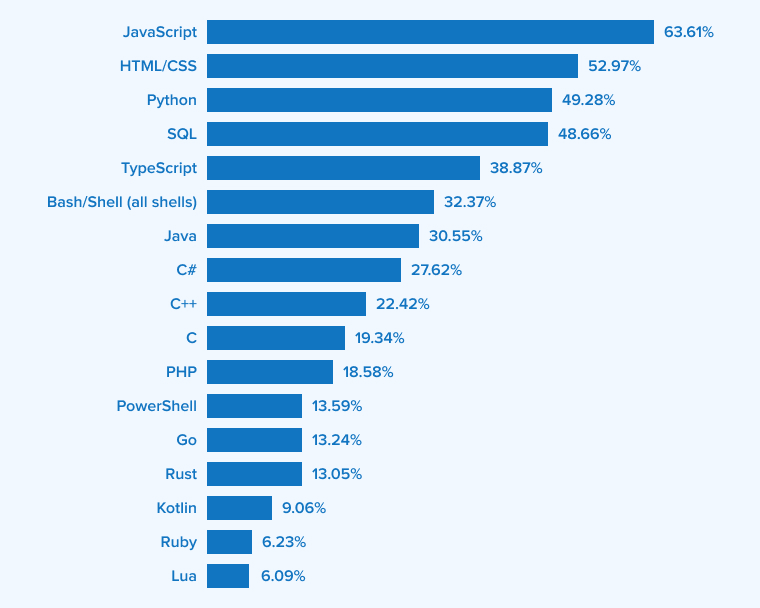
5.2 Features
Java offers object-oriented programming which allows you to create reusable code. During runtime, Java code can find errors using self-reflection. Java also supports multi-threading, which allows different procedures to run concurrently.
Goroutines in Go give concurrency, allowing you to run multiple functions simultaneously. It also offers powerful garbage collection capabilities to manage a large codebase.
5.3 Performance
Java Virtual Machine and Java Compilation hinder the performance of the language. Though you can run your Java application on any platform, it may not always perform optimally in speed.
Golang’s results are similar to C language in terms of speed and performance. Automatic garbage collection in Golang eliminates unnecessary pauses, enhancing its performance. Efficient memory management in Golang improves its speed.
5.4 Community
Java is supported by a community larger than Go. They contribute more often to the advancement of the language. However, Go also has the support of a good growing community. Both communities are active, and helpful and provide feedback on issues.
5.5 Usage
Scaling a large application is facilitated by using Goroutines in Golang. Meanwhile, the extensive library of Java helps developers create better features with minimal coding.
5.6 Application
Java is a user-friendly language that can help you develop cross-platform applications. On the other hand, Go is robust but it lacks cross-platform capabilities. You have to compile code for each platform using binary files. It is also argued that Golang isn’t an ideal choice for mobile app development.
5.7 Cross-Platform Development
Java has some incredible code compilation capabilities. Developers just have to run past their code through the JVM. It acts as an interpreter for Java to execute code on various platforms. Golang compiles binary files separately for every platform on which you want to execute your code. This is a very time-consuming and overwhelming process.
5.8 Ease in Coding
Learning Golang is easy. It is a statically typed, procedural, and compiled language that offers some robust tools and libraries. Because it is relatively new, Golang comes with optimized features that help developers save time in coding. Therefore, its code is compact and there aren’t any unnecessary parentheses in Go’s syntax.
Meanwhile, Java is an object-oriented language providing a wide range of libraries. Because of its longevity, a lot of reusable source codes are available. This reusability leads to improved development efficiency. Java also allows you to check your code for errors during runtime.
5.9 Memory Management
Both Java and Go come with automatic garbage collection features. While Java utilizes generational garbage collectors that slow down the code implementation, Go uses modern garbage collectors that are optimized to prevent any pauses in garbage collection.
5.10 Language
Golang is an open-source, compiled, and procedural language whereas Java is an object-oriented language.
5.11 Garbage Collection
Both Golang and Java support automatic garbage collection. While Java utilizes garbage collectors that slow down the code execution and implementation, Go uses modern garbage collectors that are optimized to prevent any pauses in garbage collection.
5.12 Concurrency
Golang provides support for concurrency using its built-in features like Goroutines. It allows you to perform various functions concurrently. Even running thousands of Goroutines simultaneously in Golang does not pose a risk of crashing your backend systems.
On the other hand, Java utilizes threads to provide concurrency. Java’s multithreading feature enables you to run multiple processes simultaneously. It is suitable for handling high web traffic.
5.13 Speed
Because garbage collectors hinder the Java code implementation, the speed is drastically reduced. Meanwhile, Golang offers speed and performance similar to that of C language. Its efficient memory management helps to improve the speed.
5.14 Frameworks
Golang provides a variety of frameworks such as Gin, Beego, and Kit whereas Angular, Vaadin, and Grails are amongst the most popular Java frameworks. However, it is important to note that while both languages offer a large range of frameworks, Java’s frameworks are more mature as they have been around longer than Golang frameworks.
5.15 Pointers and Reflection
Both Java and Golang support self-reflection for code, where code can analyze itself to find any errors present in it. In the case of pointers, Golang supports pointers, but Java being a high-level programming language, doesn’t support low-level functionalities like Pointers.
5.16 Error Handling
Golang adopts a unique error-handling approach that uses explicit return values, which are checked easily to manage errors. Meanwhile, Java uses exceptional handling instead of an error-handling mechanism by using exceptions to manage errors.
5.17 Microservices
The startup time of Go apps is significantly faster, and they have a low memory footprint. So, breaking down the app architecture and keeping it secure and maintainable is easy using Go.
However, it is recommended that you use Java for large and complex applications that use only one server. Because Java is well-equipped to correct imperfections, having adapted to industry requirements over time.
Further Reading on: Microservices Implementation in Java
6. Conclusion
On one hand, you have Golang, a modern procedural and compiled language known for its static typing feature. On the other hand, you have a traditional object-oriented language with imperative features. Which one would you choose for your next project?
Deciding your pick depends mostly on your project requirements. After reading this article on Golang vs Java, one thing becomes clear: each language has its unique features to offer.
So, if you are building a data processing app that needs to be simple but quick then go with Golang. But if you are developing a large and complex application or a mobile app then you have to pick Java.


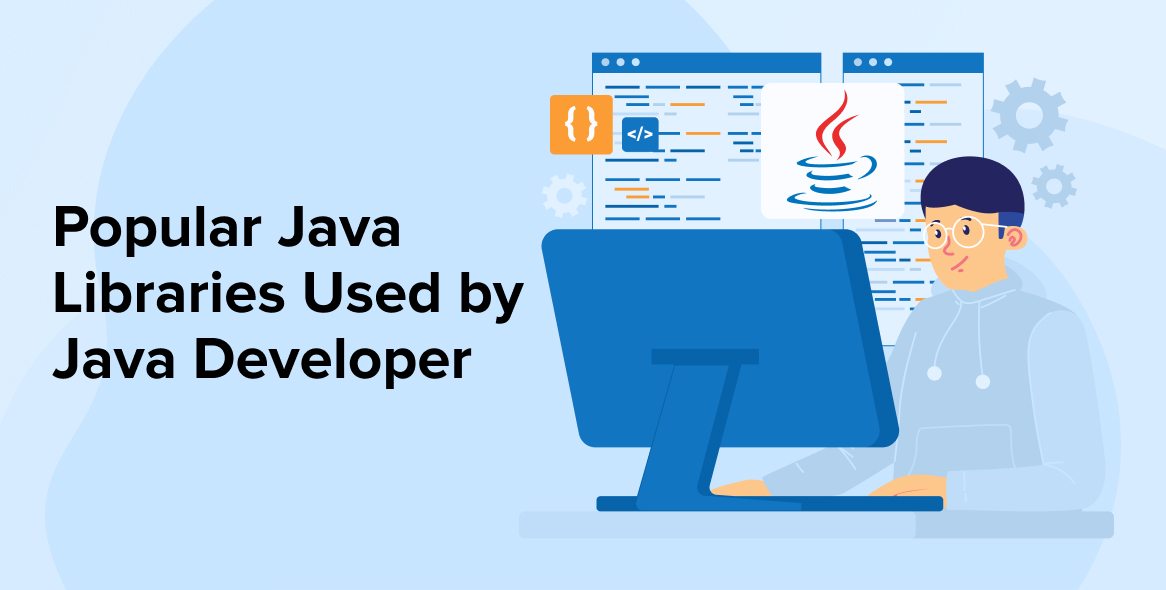
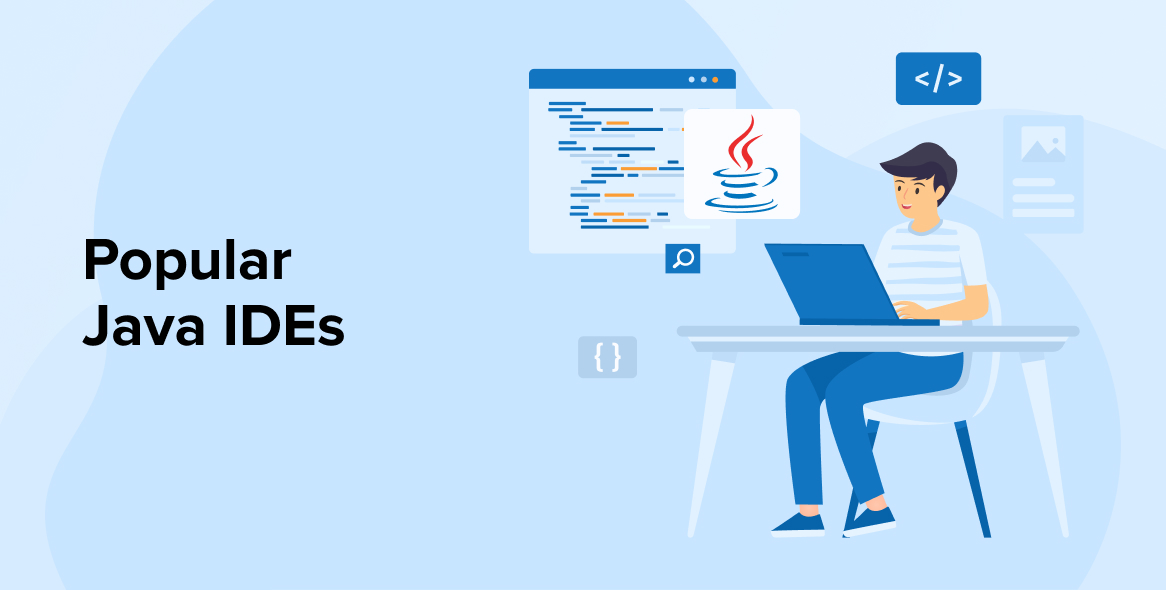
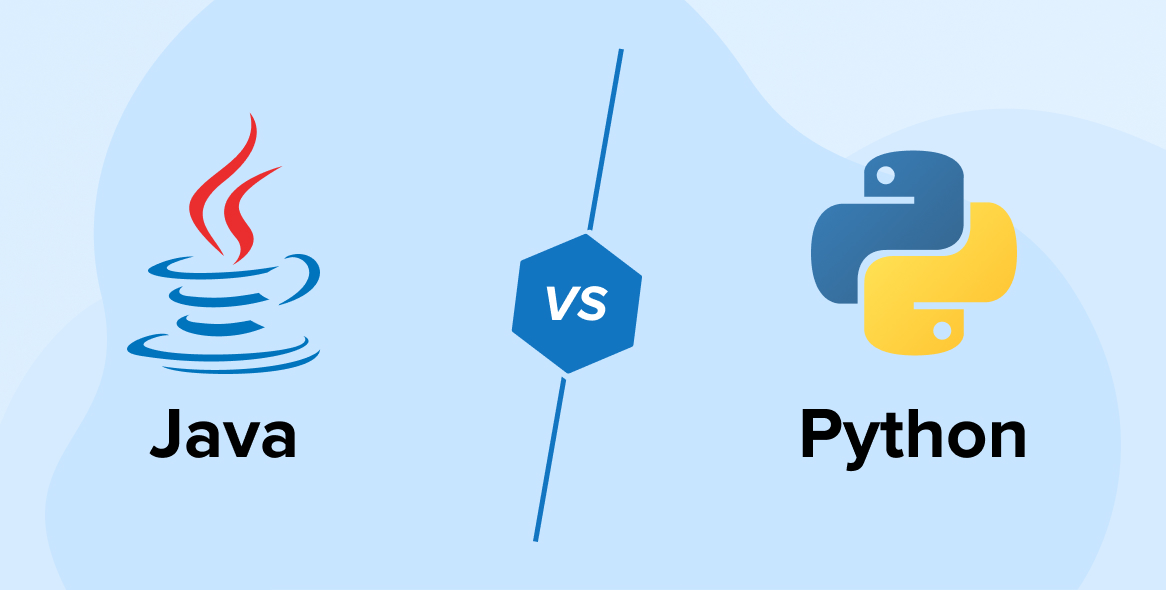

Comments
Leave a message...